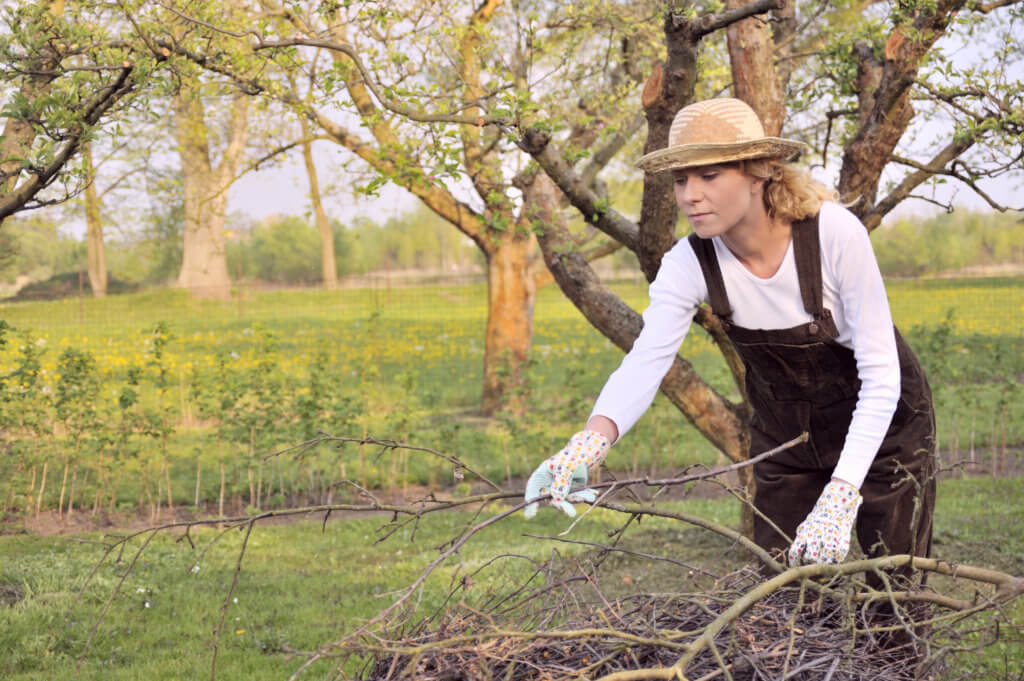NEWS RELEASE — FOR IMMEDIATE RELEASE
Contact: Sarah Volkman
svolkman@tnc.org
215.622.0557
BEWARE OF UNWANTED GARDEN AND TREE PESTS DURING SPRING CLEANUP
Tree-killing insects and diseases can be spread when disposing of yard waste

ARLINGTON, VA—March 20, 2013 – On the first day of spring, homeowners and gardeners nationwide are considering the annual task of cleaning up their yards and gardens to prepare for the growing season. This past winter has brought ample snow, rain and wind in most parts of the nation, knocking down more than the usual share of branches and even entire trees. Gardeners, landscapers, and anyone working outside this spring need to know that tree branches, firewood, and cleared brush can harbor invasive insects and diseases, making proper use or disposal critical to preventing the spread of tree-killing pests.
“Even experts can’t always detect a couple of pin-head size insect eggs or a few microscopic fungus spores hidden in wood; however, these tiny threats are enough to destroy an entire forest,” said Leigh Greenwood, Don’t Move Firewood campaign manager, The Nature Conservancy. “Disposing of tree debris, brush, and other yard waste either on site or through municipal composting is the best way that homeowners can prevent spreading tree-killing pests as they clean up their yards and gardens this spring.”
More than 450 non-native forest insects and diseases are now established in the United States. While most can’t move far on their own, many pests can hitchhike undetected on firewood and brush, starting new infestations in locations hundreds of miles away. These infestations can destroy forests, lower property values, and cost huge sums of money to control. According to the U.S. Department of Agriculture Animal and Plant Health Inspection Service, estimates for damage costs in urban areas for just one invasive pest, the Asian longhorned beetle, range from $1.7 billion for nine selected cities to $669 billion for the entire United States.
Pest infestations can take years to be recognized by the authorities because sometimes trees appear healthy despite harboring harmful organisms. Many states have either regulations or quarantines relating to the movement of raw logs, unprocessed wood, or firewood. Depending on the types of problems present in a given state, these regulations might include cut firewood, raw logs under a certain length, high risk species of trees or brush, or other woody materials. Some of the invasive pests that have prompted both federal and state quarantines include the emerald ash borer, Asian longhorned beetle, spongy moth, pine shoot beetle, sudden oak death, sirex wood wasp, and the hemlock woolly adelgid.
“During the spring, people also can be on the lookout for signs of invasive pests as they work in their yards and gardens,” said Greenwood. “Symptoms might include unusual holes in trees, late or damaged leaf buds, or a pattern of dead tips on otherwise healthy branches. Although these insects and diseases can sometimes be difficult to detect, observant, concerned citizens are usually the ones who discover new infestations.”
Tips for spring cleanup:
- If you don’t want to keep your firewood until next winter, don’t be tempted to take it with you when camping this spring or summer. Instead, you can give it to your next-door neighbor, burn or chip it on site, or dispose of it locally.
- Hire a tree service or rent a tree chipper to shred fallen trees and branches and brush into mulch for your own garden beds and landscaping projects.
- Many areas now offer a yard waste recycling program. Contact your municipal solid waste management department for information specific to your area.
- If a yard waste recycling or composting program is not available, and you cannot keep it on site, brush, logs, and branches should be disposed of in a local landfill.
- Take care to respect all state and local regulations on the movement of firewood and other unprocessed wood – some areas are subject to serious fines for violations. For more information, visit https://www.dontmovefirewood.org/the-problem/state-state-information/index.html.
- During your spring cleanup, if you notice an insect or tree disease you don’t recognize, take a photo or obtain a specimen of it, and compare it to Web site photos of the suspected pest. A good resource to help in identification is: https://www.dontmovefirewood.org/gallery-of-pests.
- If you believe you have found a new outbreak of an invasive insect or disease, contact your state department of agriculture: https://www.rma.usda.gov/other/stateag.html.
###
To learn more about how to prevent forest pests from destroying forests, log onto www.dontmovefirewood.org.
The Nature Conservancy is a leading conservation organization working around the world to protect ecologically important lands and waters for nature and people. The Conservancy and its more than one million members have been responsible for the protection of more than 18 million acres in the United States and have helped preserve more than 117 million acres in Latin America, the Caribbean, Asia and the Pacific. Visit us on the Web at www.nature.org.



